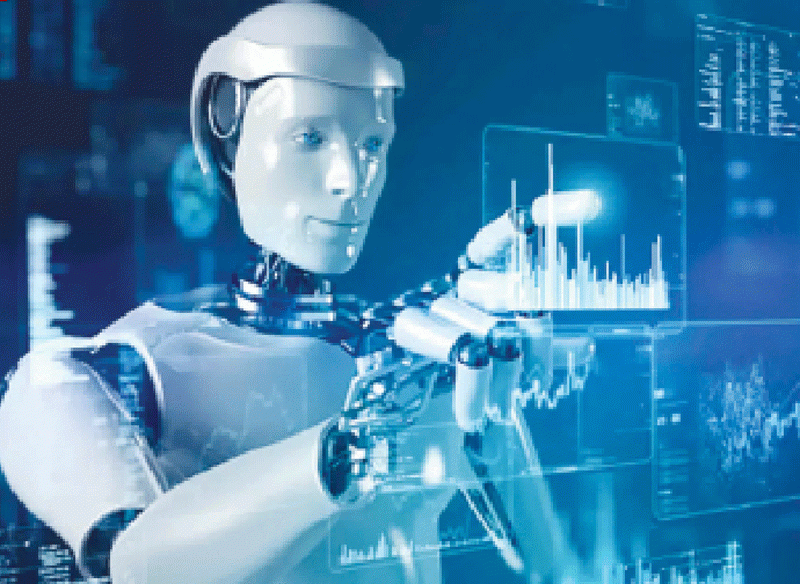
AS we continue to dissect artificial intelligence (AI). We must have a clear distinction between AI and human intelligence (HI).
AI and HI are both intelligences. However, they are two distinct forms of intelligence. AI is a relatively new technologically-based field; HI has been in existence ever since the first human being was created (In other words HI is timeless), and it has been studied for centuries.
A simplistic view can make one believe that these two are similar, yes, they are all forms of intelligence yet there are fundamental differences between AI and HI. To have a clear appreciation of AI, it is vital to have an understanding of these differences.
When we talk about intelligence, we are encompassing various mental abilities that enable human beings to comprehend, learn, unlearn, reason, and logically think and solve problems.
HI involves a complex interplay of cognitive functions. These cognitive functions include but are not limited to attention, perceptive abilities, attention generation, memory, language development, and planning capabilities.
The most important aspect of HI is its connectedness to emotions. This allows HI to enable us to adapt and change. HI over the years has been accepted as a multi-faceted construct that can be measured.
We can measure HI using various standardised tests, which can give scores as a way of predicting outcomes. To put this in simple terms we can measure HI through tests measuring one’s educational achievement, psychometric examinations, memory games, job performance, health measures etc.
Having said all this, let us walk together in dissecting the differences between AI and HI.
- Time running out for SA-based Zimbos
- Sally Mugabe renal unit disappears
- Epworth eyes town status
- Govt orders Marondera to re-advertise TC post
Keep Reading
Above, we have briefly described Human Intelligence, so what then is Artificial intelligence?
AI in simple terms refers to intelligent machines (computers) that can mimic (copy) and perform tasks that human intelligence can perform, such as problem-solving and decision-making.
AI uses algorithms and complex machine learning techniques to analyse and interpret vast amounts of data and make decisions based on the data.
AI can mimic the behaviour of humans based on their activity patterns; this is mainly seen in robotics. AI-driven machines (computers) are ubiquitous in our lives, whether we are aware of them or not.
In our everyday lives these days, we use autocorrect on our smartphones, Google Maps for directions, voice recognition and face recognition etc. The most remarkable ability of AI systems that we should emphasise and take note of is that AI can self-correct, self-learn, and self-analyse, with little or no human intervention.
Having said all this, what are the main differences we should know?
Development (evolution)
It is imperative to know that HI is a result of a process of natural selection which took place millions of years ago. If one believes in Darwin’s Theory of Evolution (DTE), then this process started from the development of brains in early hominids to the complex brains of modern humans.
HI is a response to the challenges and demands that exist in our environment. The HI evolution involves partly the enlargement of brain size to the development, comprehension, and acceptance of specialised tools, language use, problem-solving, and maintenance of social interactions.
AI, as we mentioned last week is a term that was coined in the 1950s by computer scientist John McCarthy. AI refers to computer or machine systems that can perform learning, reasoning, problem-solving, and perception.
AI includes but is not limited to machine learning, natural language processing, and robotics. In other words, AI is a human invention.
Speed of data processing
When it comes to processing data, AI-driven systems have an edge over humans. AI can process data faster and more accurately. The human brain can take more time like minutes to solve a math problem, but AI can solve not only one but multiple math problems within a minute.
This difference is that the computing power of machines can process and analyse vast amounts of data quickly, whereas the human brain has a limited ability to process data.
However, it is important to realise that despite the speed and accuracy of AI, there are certain areas where human intelligence is still unparalleled. HI can understand and interpret complex human emotions, and think critically in uncertain situations. This sets human intelligence apart from AI.
Very essence, accuracy
HI is inseparably tied to the human brain. The human brain is a sophisticated and extensive network of neurons, nerve cells, and synapses that enables human beings to think, reason, learn, unlearn, and make decisions. Whilst, AI is tied to computers and machines, which utilise algorithms, pre-programmed software and hardware components. In computer language, they use a binary language of 0s and 1s. AI relies on data it has been fed to make decisions; this makes the AI decision-making process highly objective.
On the other hand, human decision-making is fundamentally controlled and influenced by subjective factors. The factors that influence human decision-making cannot be quantified and are not primarily dependent on figures or data, instead, they are influenced by emotions, personal biases, and social and cultural factors, primary socialisation, among others.
This gives human beings the ability to use intuition and empathy to make decisions. AI can be accurate based on a set of pre-programmed rules, which enables it to consistently dish out accurate results.
However, human beings are prone to making errors due to subjectiveness, which may impact the decision-making process.
Functioning, adjustments
AI and HI fundamentally differ in their approach to problem-solving. Human beings heavily rely on their brain, particularly memory and cognitive abilities, while AI machines rely on data and specific (pre-programmed) instructions.
Human beings require learning time to process and comprehend complex problems. In contrast, AI can provide accurate results faster using inputted data.
Moreover, AI can learn and improve its performance over time. However, it takes a considerable amount of time to comprehend new things. This is so because it relies on pre-programmed instructions and data input to perform tasks, which means any deviation from these instructions can lead to errors.
In contrast, HI is extremely adaptable and quickly notices and adjusts to changes. This gives human beings the ability to acquire new skills and knowledge relatively quickly and adjust to new situations.
Social comprehension
HI is extremely skilled in recognising and adjusting to social settings, for AI it is one of its major weaknesses. Human beings can process abstract and sensitive information. This allows humans to respond appropriately to social situations such as death, and build relationships.
AI cannot understand the complexity of human emotions. While AI can be trained to learn social and emotional cues, it cannot match the depth and complexity of human social intelligence.
Additionally, the human brain can think critically, it is adaptive and can come up with new ideas and solutions. HI has unlimited creativity and innovation, enabling people to think beyond pre-existing rules or limitations.
In contrast, AI performs tasks based on its programming, and cannot go beyond the programmed instructions, it is unable to generate new and original ideas.
The debate between AI and HI is ongoing, and it will certainly continue for years to come. AI now consists of systems and machines that can outperform humans, such as AlphaGo and Deep Blue, but it cannot match the potential of the human brain.
Despite being designed and trained to mimic and simulate human behaviour, AI systems cannot make rational decisions as humans do, which is one of the key differences between artificial intelligence and human intelligence.
Join us every week as we delve together into the world of Artificial Intelligence (AI), if you have specific areas that you need addressed, please contact the editors or email the author directly and the issue will be addressed.
- Sagomba is a chartered marketer, policy researcher, AI governance and policy consultant, ethics of war and peace research consultant. — esagomba@gmail.com. LinkedIn: @ Dr. Evans Sagomba X: @esagomba.






